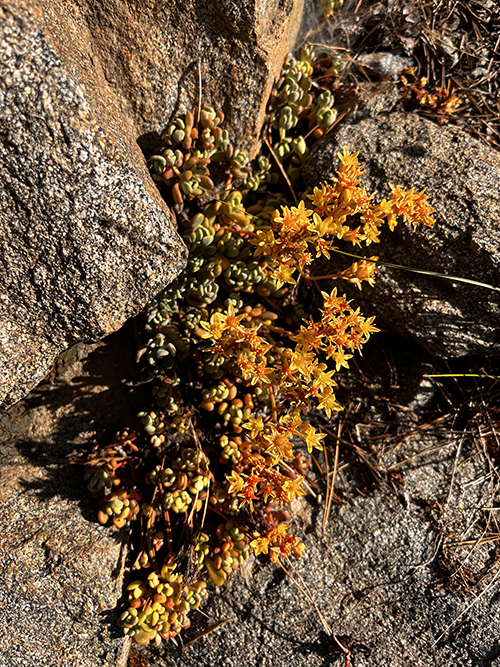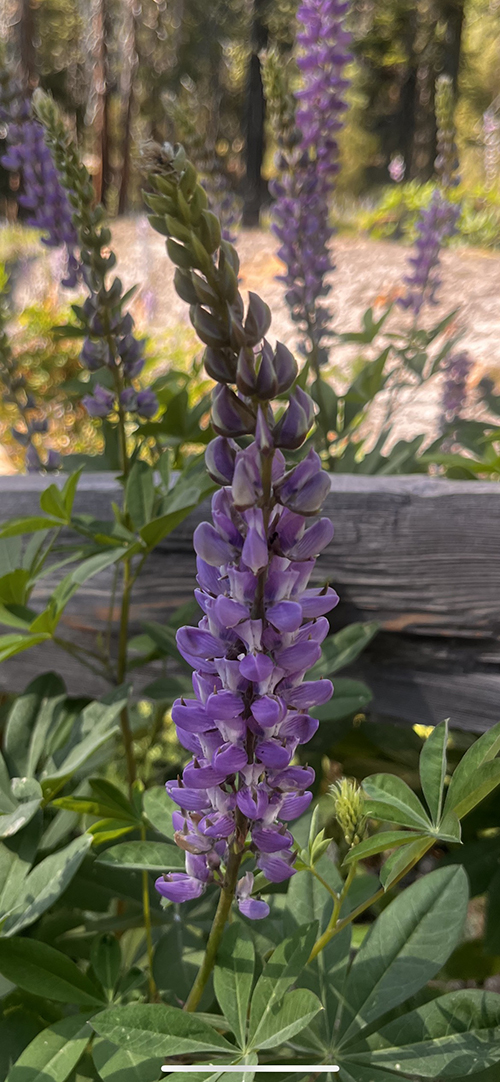Let It Grow
By Tammy Thornton
This week my family was blessed to hike in Yosemite National Park. Though we were 3,000 miles from South Jersey and among mountains, lakes, and plenty of rocky trails, a surprising amount of flowers looked familiar. When you realize that the Yosemite Valley is in gardening zone 7b to 8a, it makes sense that we grow many of the same flowers in our Shore Local area. Whenever I visit a new place, I draw inspiration from the beautiful flowers growing around me and take mental notes to implement those ideas back home. If you have ever considered creating a rockery, Yosemite can teach us what grows happily among the rocks.

Though you may not have monoliths in your backyard, a rockery can add some interest to your existing garden. Rock gardens can beautify sloping sections and retaining walls in your yard, or you may just wish to plant flowers among stepping stones. Once established, rock gardens are easy to maintain, provided you choose plants that thrive in shallow soil and between nooks and crannies.
In Yosemite, blue-purple lupine flowers grow everywhere among the rocky slopes and meadows. In New Jersey, you can grow the native perennial wild lupine which flowers best in full sun and well-drained sandy soil. In addition to the spiky purple flowers, you can enjoy the unique palm-shaped leaves. Pollinators will be happy if you plant this native plant in your garden. It plays host to the larvae of the Karner Blue butterfly and the Frosted Elfin butterfly. Other familiar flowers blooming among the rocks during a Yosemite heatwave were Columbine and yarrow. Once established, both flowers will be drought-tolerant in your own garden, making them an excellent choice for a rock garden. Columbine will also attract hummingbirds.
While spreading phlox grows among the rocks in California, on the East Coast we have creeping phlox that will spill over rocky walls. The pale blue, pink, or purple flowers provide a lovely contrast to gray rocks and stone. Succulents are a no-brainer for a rock garden since they are drought-tolerant and easy to care for. Aptly named, stonecrop (sedum) should be part of your rock garden. Sierra stonecrop is found growing among the rocks in Yosemite, but you can find many different types of stonecrop to grow along the Jersey Shore. Though there are different types of sedums that grow very tall, for the rockery, we are talking about the mat-forming or creeping type of stonecrop. Pollinators will be attracted to the flowers of stonecrop, but the waxy leaves often make it deer and rabbit resistant.

Heaths and heathers are must-haves in the rockery. These low-growing evergreen shrubs like sandy, acidic, well-drained soil. Though the two plants are often lumped together, they are two different species. “Heath has teeth and heathers have feathers” is a little rhyme that helps gardeners identify the two different species by their foliage.
Another plant growing in the rocks at Yosemite is penstemon. The bright pink flowers seemed to grow right out of the rocks. Though the type growing in Yosemite is called “mountain penstemon”, native East Coast penstemons (also called beardtongue) make the perfect flower for a rock garden since they are drought-resistant and can thrive in poor soil. They attract a wide variety of pollinators, including hummingbirds.
If you’d like further inspiration for a rock garden, you should read one of my favorite gardening books called “Down the Garden Path” by Beverly Nichols. His humorous tales of creating a rockery mainly out of spite for his nosy neighbor will give you a laugh and enrich your love of gardening.

Tammy Thornton lives with her husband, children, and crazy pets while enjoying a life of gardening, cooking, and going to the beach.








